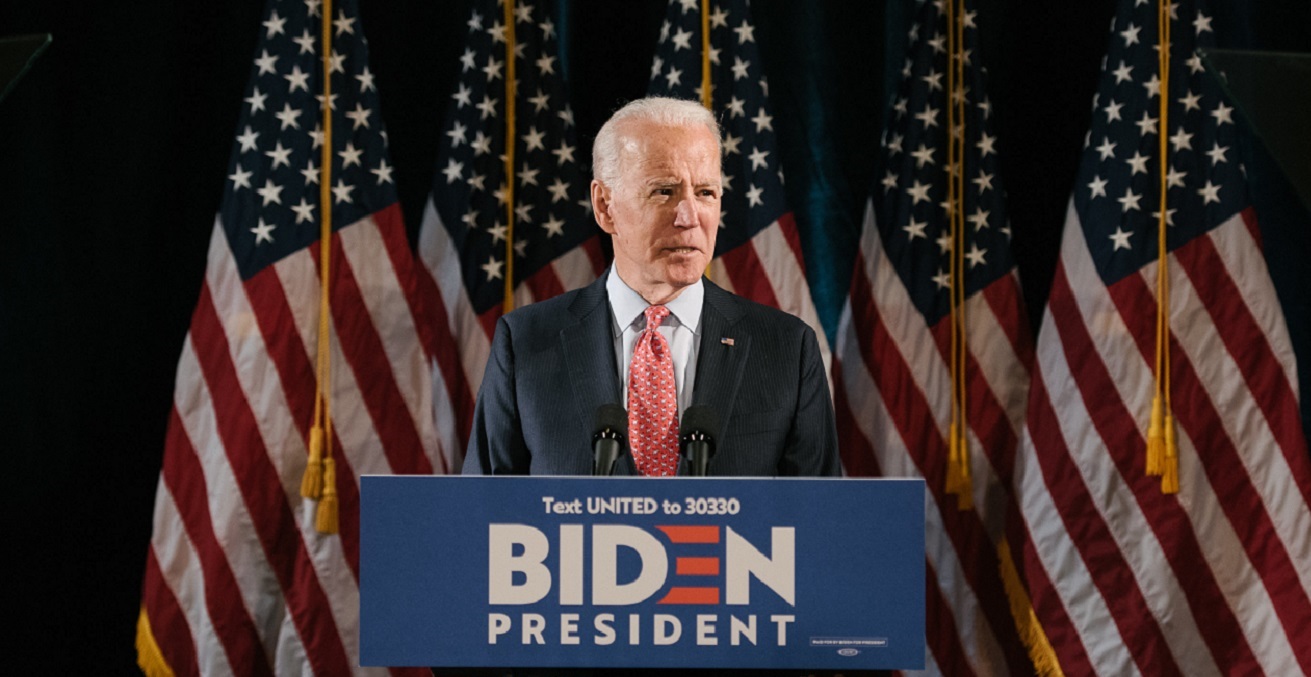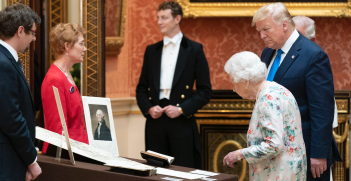The First 100 Days: Biden Means Business in the Indo-Pacific

Biden’s first 100 days as president have seen a noticeable change regarding foreign policy to that of Trump. With a renewed commitment to the Indo-Pacific, the US aims to enhance cooperation with allies to respond to growing challenges in the region.
As Joe Biden approaches his 100th day in office, his early foreign policy moves have signalled a stark change in approach from that of his predecessor, Donald Trump. A renewed commitment to the Indo-Pacific has been demonstrated through key appointments and senior visits, official statements emphasising the importance and value of alliances, and a hardline stance against aggressive Chinese behaviour. Biden’s first days in office have also telegraphed a foreign policy footing very favourable for Australian interests.
The US’s international standing suffered a hit over the last four years, as Trump’s “America First” foreign policy approach withdrew US leadership from the international stage. Now, President Biden has declared “America is Back” and ready to restore confidence US by reversing Trump-era policies.
Rebuilding critical alliances in the Indo-Pacific
One of President Biden’s first priorities is to repair US alliances strained under the Trump administration. Departing from Trump’s unpredictable use of Twitter diplomacy that often explicitly targeted allies, Biden has placed an emphasis on rebuilding damaged partnerships after years of “neglect and abuse.” As an internationally-minded leader, Biden recognises the importance and unique advantages of alliances and seeks to re-establish the trust Trump had fractured.
Biden’s early activities as president clarify where his priorities lie. Within weeks of his inauguration, he connected via telephone with leaders from Japan, South Korea, Australia, the UK, Canada, Germany, France, NATO, and Mexico – all significant allies or partners of the US.
The administration has shown a particular focus on relationships in the Indo-Pacific. The first diplomatic visits made by senior members of Biden’s foreign policy team were to Asia: Secretary of Defence Lloyd Austin travelled to India, then was joined by Secretary of State Antony Blinken for visits to South Korea and Japan. These meetings reaffirmed the US commitment to investing in key regional relationships and alliances.
Foreign policy decisions made by the Biden administration demonstrate a recognition of the Indo-Pacific as the word’s economic and strategic centre of gravity. In his first multilateral commitment, President Biden attended an historic Quadrilateral Security Dialogue (Quad) Summit with Indian Prime Minister Narendra Modi, Australian Prime Minister Scott Morrison, and Japanese Prime Minister Suga Yoshihide.
This significant meeting brought together the four like-minded countries amidst an increasingly assertive China to call for a region that is “free, open, inclusive … [and] anchored by democratic values and unconstrained by coercion.” Together, the Quad members released a joint statement committing to the delivery of one billion doses of COVID-19 vaccines to Southeast Asia by 2022. The first Quad meeting held at the leader level and robust post-meeting outcomes were an early success for the Biden administration in expressing the seriousness of US engagement in the region.
In addition, the composition of Biden’s national security team indicates how significant the administration considers the Indo-Pacific. The largest contingent of this team is the Indo-Pacific directorate, led by Indo-Pacific Coordinator Kurt Campbell. Campbell previously served under Secretary of State Hillary Clinton and is well respected in the region. Further, the appointment of Laura Rosenberger as senior director for China, who has served in various government positions focused on the Indo-Pacific, brings invaluable expertise and understanding of the region.
A tough China approach to strengthen a rules-based order
From day one, the Biden administration has maintained a hardline approach towards China as its most serious challenger in the region. In outlining the administration’s approach to China, Biden asserted the US will cooperate with China where possible, such as on climate change, yet confrontational where it needs to be on economic coercion and attacks on human rights, intellectual property, and global governance.
Secretary Blinken has continued Mike Pompeo’s tough China stance. Although the tariffs and sanctions against China put in place under Trump will remain, the US recognises that Trump’s trade war with China was doomed from the beginning and will opt to compete with China “from a position of strength” with closer cooperation with allies.
This tough stance was demonstrated further in the administration’s first high-level contact with China in Anchorage on 18 March 2021. Secretary Blinken and National Security Advisor Jake Sullivan met with their Chinese counterparts, Yang Jiechi and Wang Yi, in a heated bilateral exchange. During talks, Secretary Blinken raised concerns over human rights abuses in Xinxang, Hong Kong, and Taiwan, cyber-attacks on the US, and economic coercion towards allies including Australia. While the combative tone of the meeting emphasised the poor state of bilateral relations, the willingness of senior US officials to hold their ground against their Chinese counterparts mirrors sentiments expressed by US allies.
For Australia, this mention of Chinese economic coercion at the Anchorage meeting serves as the highest possible advocacy by the US regarding China’s the trade sanctions targeting Australian exports. This clearly telegraphs the Biden Administration’s desire to support key allies in promoting a rules-based economic order. This is further demonstrated through an earlier statement made by National Security Advisor Jake Sullivan in late 2020. In it, Sullivan outlines that the US will stand shoulder to shoulder with Australia against China’s economic abuses. This is a refreshing approach, as Trump’s policies failed to succeed in addressing trade coercion and focused narrowly on the United States, leaving Australia to fend for itself.
Engaging in Indo-Pacific trade architectures
While the Biden administration has signalled a new approach to economic issues, it remains to be seen how it will re-engage with Indo-Pacific trade architectures. Trump’s first act as president was to withdraw the US from the Trans-Pacific Partnership (TPP), a regional trade agreement that locked in a US-preferred model for trade liberalisation.
While campaigning for president, Biden expressed in-principal support for the agreement and has subsequently said Trump’s decision to withdraw from the TPP is akin to “putting China in the driver’s seat” on setting the “rules of the road.” Similarly, Sullivan has stressed the importance of the US setting trade rules. Joining the Comprehensive and Progressive Agreement for the TPP (CPTPP) would signal US commitment to economic reengagement in the Indo-Pacific and strengthen the regional trade architecture.
Depending on the terms negotiated, US accession would be a welcomed move by member countries. However, domestic challenges must first be overcome, including bucking protectionist attitudes and convincing both Democrats and Republicans of the benefits.
Within his first 100 days in office, President Biden has noticeably stepped up US defence and foreign policy engagement with the Indo-Pacific and empowered senior experts to rebuild credibility with allies. This fresh approach is a welcome development for Australia and other US allies and partners who are eager and willing to join with the US in responding to a more challenging regional environment and reinforcing a rules-based order.
The challenge for Australia, along with Japan and South Korea, will now be finding ways to maintain US foreign and defence policy attention in the Indo-Pacific going forward. This is particularly important in the context of a myriad of domestic US challenges that consume a large part of Biden’s agenda, including COVID-19 vaccines, race relations and policing, gun control, and job creation.
Gemma King is the Research Officer at the Perth USAsia Centre.
This article is published under a Creative Commons License and may be republished with attribution.





